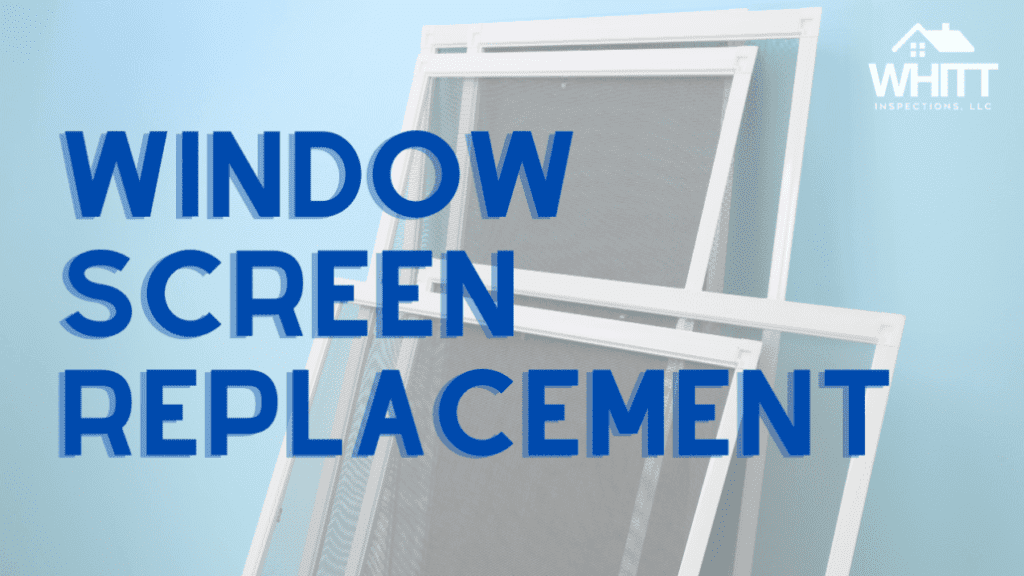
Window screens are essential components of any home, offering protection from insects and debris while allowing fresh air to circulate. Over time, however, window screens can wear out, tear, or lose their effectiveness. Replacing your window screens is a relatively simple and cost-effective home improvement project that can enhance your home’s functionality and appearance. In this guide, we will cover the reasons to Replacement Window Screens, different types of screens, and the steps for a successful replacement.
Why Should You Replace Your Window Screens?
Here are some common reasons for replacing your window screens:
- Damage or Tears: Over time, screens can develop holes, tears, or frayed edges, making them less effective at keeping insects out.
- Improved Appearance: Worn-out screens can detract from the overall look of your windows. Replacing them restores the fresh appearance of your home.
- Better Airflow: A damaged or clogged screen can restrict airflow. New screens allow fresh air to flow in more efficiently, improving ventilation.
- Customization: Upgrading to different screen materials can offer benefits such as UV protection, pet resistance, or enhanced durability.
Types of Replacement Window Screens
There are several types of window screens to choose from, each designed for specific needs. Depending on your requirements—whether it’s better visibility, enhanced durability, or energy efficiency—you can select the best material for your windows.
1. Fiberglass Screens
Fiberglass screens are the most common choice due to their affordability and flexibility. They are easy to install and offer decent visibility while keeping insects out.
- Pros: Affordable, flexible, and resistant to corrosion.
- Cons: Less durable than other options and prone to tearing.
2. Aluminum Screens
Aluminum screens are known for their durability and resistance to weathering. They are ideal for areas prone to harsh weather or where longevity is a priority.
- Pros: Stronger than fiberglass, rust-resistant, and long-lasting.
- Cons: Prone to dents and creases, slightly more expensive.
3. Pet-Resistant Screens
If you have pets that scratch at the windows, pet-resistant screens are a great option. These screens are made from thicker materials designed to withstand pet-related damage.
- Pros: Highly durable, resistant to scratches and tears from pets.
- Cons: More expensive and heavier than traditional fiberglass screens.
4. Solar Screens
Solar screens are designed to block UV rays and reduce heat penetration, making them perfect for homes in hot climates. They also help in lowering energy bills by keeping your house cooler.
- Pros: Reduces heat and glare, energy-efficient.
- Cons: Can slightly reduce visibility due to their darker color.
5. Retractable Screens
Retractable screens are a versatile option, allowing you to pull them out when needed and retract them when not in use. They are ideal for doors and windows that need a temporary screen solution.
- Pros: Easy to use, disappears when not in use.
- Cons: Higher cost and more complex installation process.
How to Measure for Replacement Window Screens
Accurate measurements are critical for a perfect fit. Follow these steps to measure your window for replacement screens:
- Measure the Width: Measure the inside width of the window frame at the top, middle, and bottom. Record the smallest measurement.
- Measure the Height: Similarly, measure the height of the window frame from top to bottom at three points, and note the smallest measurement.
- Depth Measurement: Measure the depth of the window frame to ensure the screen will fit snugly within the frame.
DIY Window Screen Replacement: Step-by-Step
Replacing a window screen is a manageable DIY project. With a few tools, you can easily install new screens and improve the overall condition of your windows.
Tools You’ll Need:
- Replacement screen material
- Spline (the rubber cord that holds the screen in place)
- Spline roller
- Utility knife or scissors
- Flathead screwdriver
Steps for Replacement:
- Remove the Old Screen: Use a flathead screwdriver to lift out the spline from the grooves of the window frame. Once the spline is removed, carefully pull the old screen out of the frame.
- Cut the New Screen: Lay the new screen material over the frame. Cut the screen slightly larger than the frame to allow room for securing it.
- Install the Spline: Using the spline roller, press the spline into the groove of the frame over the screen material. Start from one corner and work your way around the frame.
- Trim the Excess Screen: After the spline is secure, use a utility knife or scissors to carefully trim off the excess screen material around the frame.
- Reinstall the Screen Frame: Place the screen frame back into the window opening, ensuring it fits snugly and securely.
Hiring a Professional vs. DIY Installation
While replacing window screens is a task most homeowners can handle themselves, there are advantages to hiring a professional if you’re dealing with complex or large windows.
DIY Installation:
- Cost-Effective: Installing screens yourself is more affordable, with costs ranging from $15 to $50 per screen.
- Time: Each window can take between 30 minutes to an hour to replace.
- Skill Level: Basic DIY skills are sufficient for measuring, cutting, and installing screens.
Professional Installation:
- Precision: Professionals ensure a perfect fit and often provide a warranty for their work.
- Convenience: A professional can quickly handle multiple windows and more complex installations.
- Cost: Professional installation generally costs between $50 and $150 per window, depending on the screen type.
Maintenance Tips for Window Screens
To extend the life of your new window screens, follow these maintenance tips:
- Regular Cleaning: Dust, dirt, and pollen can accumulate on screens. Clean them with a soft brush or vacuum to remove debris.
- Seasonal Inspection: Check for any holes, tears, or sagging that might need repair or replacement, especially after heavy storms or strong winds.
- Protect Against Pets: If you have pets, consider pet-resistant screens to avoid frequent replacements due to scratching.
Cost of Replacing Window Screens
The cost of replacement window screens varies based on material and window size. Here is a breakdown of average costs:
- Fiberglass Screens: $15–$50 per screen.
- Aluminum Screens: $25–$75 per screen.
- Pet-Resistant Screens: $30–$100 per screen.
- Solar Screens: $50–$150 per screen.
- Retractable Screens: $100–$400 per window (includes installation).
Conclusion
Replacement Window Screens is an easy and affordable way to improve both the functionality and appearance of your windows. Whether you’re looking for added durability, energy efficiency, or just a clean and fresh look, there are many screen options to suit your needs. Whether you choose to DIY or hire a professional, a properly installed window screen will keep your home ventilated and protected for years to come.

